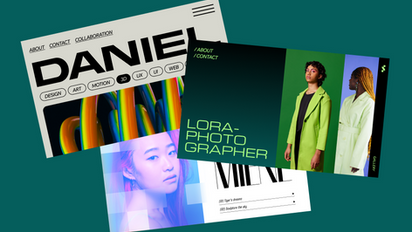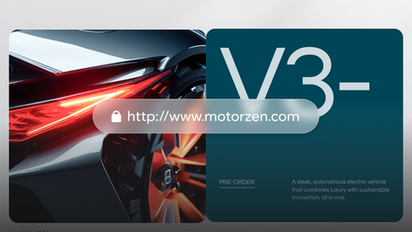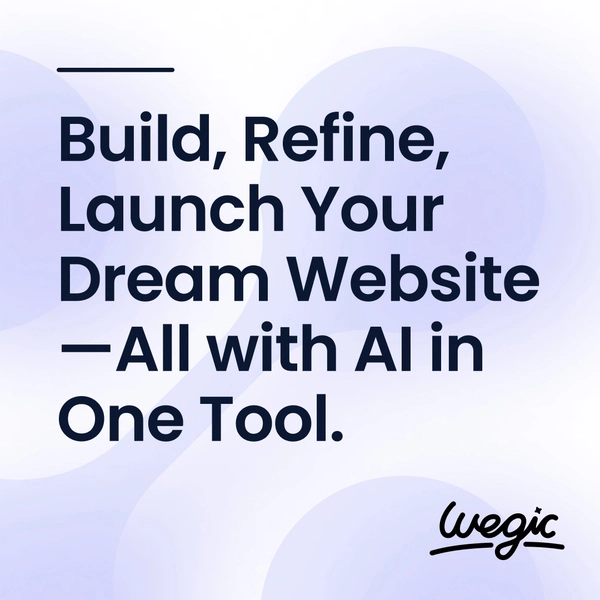A Beginner’s Guide to Web Applications Developer Salary Ucf
Web Applications Developer Salary Ucf Challenges
Web Applications Developer Salary Ucf
In today’s digital age, having a strong online presence is essential for businesses of all sizes. A well-designed website can help attract new customers, showcase products and services, and establish credibility in the marketplace. However, many business owners are hesitant to invest in web design due to concerns about cost. In this article, we will explore the factors that can influence the cost of web design and provide guidance on how to ensure that you get the best value for your money.

The Ultimate Guide to Web Applications Developer Salary Ucf
Web Applications Developer Salary Ucf
Wix
Wix is a popular website builder that offers a wide range of features and customization options at an affordable price. With Wix, you can choose from hundreds of templates to create a website that fits your needs and style. The drag-and-drop editor makes it easy to customize your site, and the platform also offers a variety of apps and integrations to help you add functionality to your website.
One of the best things about Wix is that it offers a free plan that allows you to create a basic website with Wix branding. If you want to remove the branding and use your own domain name, you can upgrade to one of Wix’s premium plans, which start at just $14 per month. With prices like these, Wix is definitely one of the most affordable website builders on the market.
Weebly
Weebly is another popular website builder that is known for its ease of use and affordability. Like Wix, Weebly offers a drag-and-drop editor that makes it easy to create a professional-looking website without any coding knowledge. The platform also offers a variety of templates to choose from, as well as features like e-commerce functionality and SEO tools.
Weebly offers a free plan that allows you to create a basic website with Weebly branding. If you want to remove the branding and use your own domain name, you can upgrade to one of Weebly’s premium plans, which start at just $9 per month. With its low prices and user-friendly interface, Weebly is a great option for those looking for an affordable website builder.
Squarespace
Squarespace is a website builder that is known for its beautiful design templates and customizable options. The platform offers a range of features, including e-commerce functionality, blogging capabilities, and analytics tools. Squarespace is also known for its excellent customer support, making it a great option for those who may need assistance along the way.
Squarespace does not offer a free plan, but its pricing is still relatively affordable, with plans starting at $12 per month. While this may be slightly higher than some other website builders, Squarespace’s beautiful design templates and advanced features make it a worthwhile investment for those looking to create a professional-looking website.
WordPress.com
WordPress.com is a popular website builder that is based on the open-source WordPress platform. While WordPress.com may not offer as many customization options as self-hosted WordPress sites, it is still a great option for those looking for an affordable and user-friendly website builder. WordPress.com offers a range of features, including blogging capabilities, e-commerce functionality, and customizable templates.
WordPress.com offers a free plan that allows you to create a basic website with WordPress branding. If you want to remove the branding and use your own domain name, you can upgrade to one of WordPress.com’s premium plans, which start at just $4 per month. With its low prices and advanced features, WordPress.com is a great option for those looking to create a professional website on a budget.
Here are some of the top web design trends to watch out for in 2021:
1. Dark Mode:
Dark mode has been a popular trend in web design for the past few years, and it continues to gain momentum in 2021. Dark mode not only looks sleek and modern but also reduces eye strain and improves readability in low-light environments. Many websites now offer a toggle switch that allows users to switch between light and dark modes based on their preference.
2. Neumorphism:
Neumorphism is a design trend that combines elements of skeuomorphism and flat design to create a soft, realistic look. It involves using subtle shadows, highlights, and gradients to make elements appear three-dimensional and tactile. Neumorphic design can create a more immersive and engaging user experience, making websites feel more interactive and intuitive.
3. Minimalism:
Minimalism has been a popular design trend for years, and it continues to be relevant in 2021. Clean and simple designs with plenty of white space help focus users’ attention on key elements and create a sense of calm and balance. Minimalist websites load faster, are easier to navigate, and convey a sense of sophistication and professionalism.
4. Custom Illustrations:
Custom illustrations are a great way to add personality and character to a website. They can help showcase a brand’s unique identity and differentiate it from competitors. Custom illustrations can be used to explain complex concepts, guide users through the website, or simply add a touch of whimsy and creativity to the design.
5. Asymmetric Layouts:
Asymmetric layouts break away from the traditional grid-based designs and create a more dynamic and visually interesting website. They can help draw attention to specific elements, create a sense of movement and flow, and make the design more memorable and engaging. Asymmetric layouts can be challenging to implement but can result in a truly unique and striking website.
6. 3D Elements:
3D elements add depth and dimension to a website, making it more visually appealing and immersive. They can be used to create interactive product showcases, engaging animations, or eye-catching backgrounds. With advancements in CSS and JavaScript, 3D elements are becoming easier to implement and can help create a more memorable and engaging user experience.
7. Bright Colors:
Bright and bold colors are being used more frequently in web design to grab users’ attention and create a strong visual impact. Vibrant colors can help convey brand personality, evoke emotions, and create a sense of energy and excitement. When used strategically, bright colors can help highlight key elements and guide users through the website.
8. Micro-animations:
Micro-animations are small, subtle animations that add interactivity and delight to a website. They can be used to draw attention to important elements, provide feedback to user actions, or create a sense of continuity and flow. Micro-animations can help create a more engaging and intuitive user experience and make the website feel more dynamic and alive.
9. Voice User Interface (VUI):
With the rise of voice assistants like Alexa and Siri, voice user interfaces are becoming more prevalent in web design. VUI allows users to interact with the website using natural language commands, making navigation easier and more intuitive. Integrating VUI into a website can help reach a wider audience, improve accessibility, and offer a more convenient user experience.
10. Accessibility:
Accessibility is an important consideration in web design, ensuring that websites are usable by people of all abilities. In 2021, there is a growing focus on creating accessible websites that adhere to WCAG (Web Content Accessibility Guidelines) standards. This includes features like alt text for images, proper heading structures, keyboard navigation, and color contrast ratios. By designing with accessibility in mind, businesses can reach a larger audience and demonstrate their commitment to inclusivity and diversity.

How Web Applications Developer Salary Ucf Works
Web Applications Developer Salary Ucf
In today’s digital age, having a visually appealing and user-friendly website is crucial for the success of any business. A well-designed website can help attract new customers, build credibility, and increase conversion rates. However, designing a website is not as simple as it may seem. It requires a strategic and systematic approach to ensure that the final product meets the needs and expectations of both the business and its target audience. In this article, we will discuss the website design process in detail, outlining the key steps involved in creating a successful website.
Step 1: Define the Purpose and Goals
The first step in the website design process is to clearly define the purpose and goals of the website. This involves identifying the target audience, understanding their needs and preferences, and determining the desired outcomes for the website. For example, is the website meant to generate leads, drive sales, provide information, or showcase products and services? By having a clear understanding of the purpose and goals of the website, you can better tailor the design and content to meet these objectives.
Step 2: Conduct Research
Once the purpose and goals of the website have been defined, the next step is to conduct research. This involves analyzing the competition, researching industry trends, and gathering insights into the preferences and behaviors of the target audience. By conducting thorough research, you can gain a better understanding of what works and what doesn’t in your industry, helping you make informed design decisions.
Step 3: Create a Wireframe
After conducting research, the next step in the website design process is to create a wireframe. A wireframe is a visual representation of the layout and structure of the website, showing the placement of various elements such as navigation menus, headers, footers, and content sections. Creating a wireframe allows you to plan the overall design and functionality of the website before moving on to the visual design phase.
Step 4: Design the Visual Elements
Once the wireframe has been finalized, the next step is to design the visual elements of the website. This involves creating a visually appealing and consistent design that reflects the brand identity and resonates with the target audience. Elements such as color scheme, typography, imagery, and layout are carefully considered to create a cohesive and attractive design that conveys the desired message and engages users.
Step 5: Develop the Website
After the visual design has been approved, the next step is to develop the website. This involves coding the design into a functioning website using HTML, CSS, and other programming languages. During the development phase, the website is tested for functionality, responsiveness, and compatibility across different devices and browsers to ensure a seamless user experience.
Step 6: Test and Optimize
Once the website has been developed, it is essential to test and optimize its performance. This involves conducting usability tests to identify any usability issues, testing load times to ensure fast page speeds, and optimizing the website for search engines to improve visibility and accessibility. By testing and optimizing the website, you can ensure that it meets the needs and expectations of users, leading to better engagement and conversions.
Step 7: Launch and Monitor
The final step in the website design process is to launch the website and monitor its performance. This involves deploying the website to a live server, promoting it to the target audience, and tracking key metrics such as traffic, engagement, and conversions. By monitoring the performance of the website, you can identify areas for improvement and make informed decisions to optimize its effectiveness over time.



